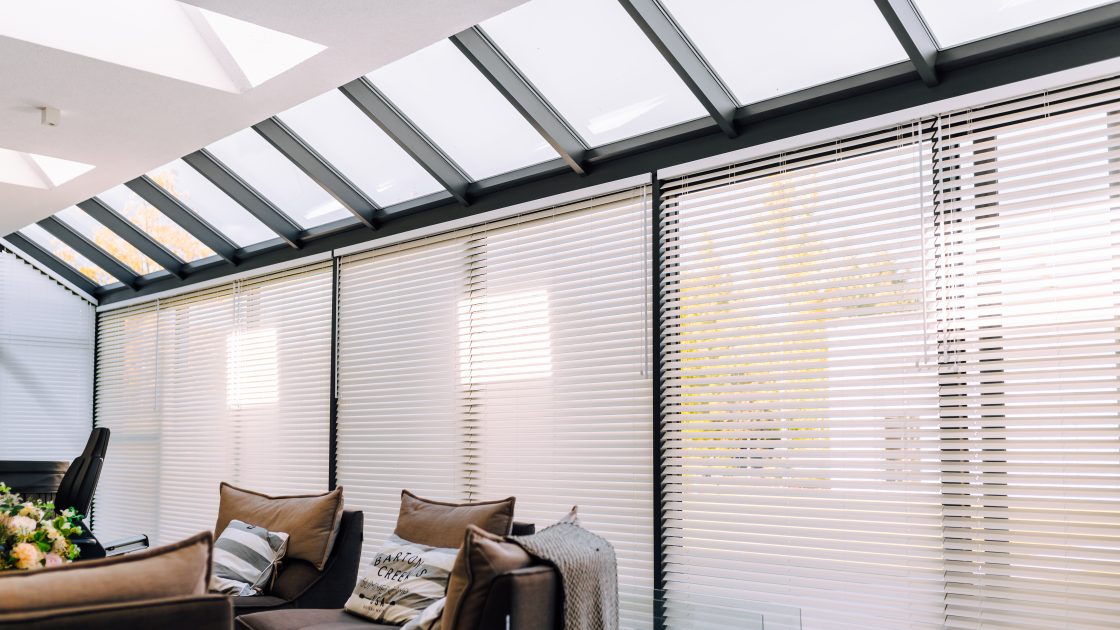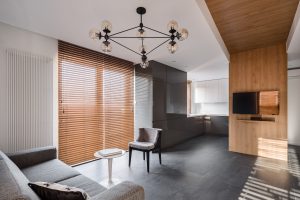What Venetian blinds to choose for a passive and low-energy home?

Low-energy and passive homes are becoming increasingly popular in Slovakia. After all, who wouldn’t want a home with minimal running costs for comfortable heating. However, designing and building passive and low-energy houses has its own regulations and it’s useful to know as much as possible about them before you decide to build one.
The natural starting point is explaining the basic difference between low-energy and passive homes. The difference lies in the maximum annual energy consumption for heating, or less than 15 kWh/m2 in the case of a passive house. Low-energy houses represent a kind of middle ground between passive and regular homes, with maximum annual energy consumption for heating set at 50 kWh/m2.
The desired parameters can be achieved in various ways – architectural solutions, design of the individual elements of the house or the choice of building materials. Shading technology plays an extremely important role in any passive or low-energy home.
It’s impossible without quality shading
The principle of passive houses is built, among other things, around the use of large windows positioned so that sunlight acts as a source of heat even in winter. Properly designed glass surfaces are therefore essential in passive and low-energy homes. However, it’s also important to note that this solution can be quite counter-productive in summer – large windows can cause the indoors to overheat, prompting the need to for air-conditioning and ultimately leading to increased energy consumption.
High-quality shading is therefore an integral part of every passive and low-energy house. External Venetian blinds with different slat shapes are often used for this purpose. They can reflect more than 85% of the incoming sunlight, thereby significantly reducing overheating indoors. However, they also serve a crucial function in winter, as the slats can be used to direct sunlight to specific parts of the room.
Suitable external Venetian blinds are useful for more than just shading. They also create a partial noise barrier and give you plenty of privacy. Unfortunately, they won’t increase the security of your home.

Bamboo Venetian blinds with 50 mm slats are perfect for large windows
Bamboo Venetian blinds also have their place in passive and low-energy homes
When it comes to passive or low-energy houses, we should always consider bamboo. The choice of this natural material is justified for many such buildings, whether used directly in construction or as a functional element, for instance as external sliding panels. Bamboo Venetian blinds are also suitable for passive and low-energy homes and can play an excellent counterpart to exterior shading technology.
There are several reasons for that. Bamboo Venetian blinds are not only highly effective at shading, but their thermal insulation properties also help create a favourable microclimate inside the house. At the same time, they look very stylish and give the interior a cosy feel. If you leave your windows without any covering on the inside, they can end up looking very cold and impersonal.
We don’t even have to look far for examples. Since passive and low-energy homes tend to use larger windows and glass surfaces, bamboo Venetian blinds with 50 mm slats will be a perfect match. They can likewise be combined with smaller formats, allowing you to finish virtually any window with Venetian blinds made from the same material. Be sure to browse our gallery of solutions. We’re confident that it will inspire your search for the perfect shading technology for your home.
